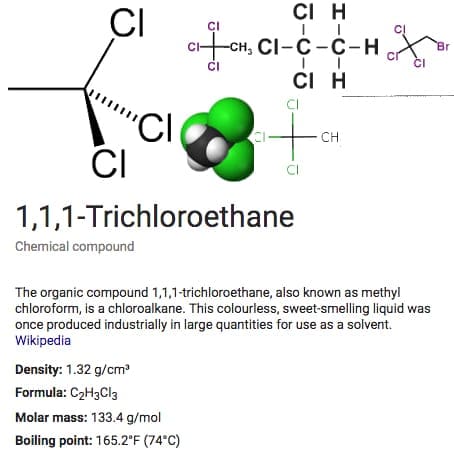About 1,1,1-Trichloromethane Water Filter
Water is essential to our daily lives, and the quality of the water we consume is crucial to our overall health and well-being. Unfortunately, many water sources contain harmful contaminants that can have adverse effects on our health. One such chemical compound is 1,1,1-trichloromethane.
Due to its potential health risks, it is important to take chemical safety seriously and take measures to remove chlorinated compounds from our drinking water. One effective method for removing 1,1,1-trichloromethane from water is through the use of a 1,1,1-trichloromethane water filter.
Whether you are concerned about the quality of your tap water or need a portable filtration system for outdoor adventures, a 1,1,1-trichloromethane water filter can help you stay healthy and hydrated.
What is Trichloromethane Commonly Known As?
Trichloromethane is commonly known as chloroform. This chemical has a long and fascinating history in the field of organic chemistry, beginning with its discovery in 1831 by the American physician Samuel Guthrie.
Initially, chloroform was used as a solvent for organic compounds, but its applications soon expanded to include anesthesia and other medical uses. In the 20th century, carbon tetrachloride and other chlorinated solvents replaced chloroform in many applications due to concerns over its toxicity and potential health risks.
Despite its decline in use, chloroform remains an important compound in organic chemistry and is still produced today for a variety of industrial applications. The chloroform molecule is slightly soluble in water but highly soluble in organic substances, making it a useful solvent for a wide range of compounds.
What is the Chemical Formula of 1,1,1-Trichloromethane?
1,1,1-Trichloromethane is a chemical compound with the molecular formula CH3CCl3. It is commonly known as chloroform, methane trichloride, or simply trichloromethane. Chloroform began to be used in the mid-19th century as an anesthetic due to its sweet smell, and it was initially known as “ordinary chloroform.”
The chemical formula of 1,1,1-trichloromethane reveals that it contains one carbon atom, three chlorine atoms, and one hydrogen atom. This compound is produced by the reaction of methane with sodium hypochlorite solution or by the chlorination of methanol.
Chloroform is produced by the reaction of methane with sodium hypochlorite solution. It can also be synthesized by the chlorination of methanol, producing a compound known as methyl trichloride. However, chloroform inhalation can be dangerous, as it can cause dizziness, nausea, and even unconsciousness.
What is Trichloromethane Used For?
Originally discovered in 1831, it was initially used as a solvent for organic compounds. However, chloroform quickly became known for its anesthetic properties and was widely used as a general anesthetic in the mid-19th century.
Today, trichloromethane is used in a wide range of industrial applications. It is a highly effective solvent and is used in the production of resins, adhesives, and other chemicals. It is also used as a refrigerant and as a cleaning agent.
In the pharmaceutical industry, trichloromethane is used in the production of various drugs and medications. It is also used as an intermediate in the production of other chemicals, including pesticides, dyes, and rubber.
While the use of chloroform as an anesthetic has declined in recent years due to concerns over its toxicity and potential health risks, it remains an important compound in many industrial applications.
Why Was Trichloromethane Discontinued?
One of the primary concerns associated with trichloromethane is its potential for toxicity. Prolonged exposure to high concentrations of the chemical can lead to liver and kidney damage, as well as damage to the central nervous system.
Additionally, studies have suggested that long-term exposure to trichloromethane may increase the risk of developing certain types of cancer, including liver and kidney cancer.
Another major issue associated with trichloromethane is its potential to cause environmental harm. The chemical is highly volatile and can easily evaporate into the air, where it can contribute to the formation of ground-level ozone and other air pollutants.
In addition, trichloromethane is not easily broken down by natural processes and can persist in the environment for many years, potentially contaminating groundwater and other sources of drinking water.
Given these health and environmental concerns, the use of trichloromethane as an anesthetic was gradually phased out over the course of the 20th century. Today, other, safer anesthetics are used in its place.
Despite its discontinued use as an anesthetic, trichloromethane remains an important chemical in many industrial applications. It is used as a solvent in the production of resins, adhesives, and other chemicals.
It is also used as a refrigerant and as a cleaning agent. However, steps have been taken to minimize the potential health and environmental risks associated with its use.
How Does Trichloromethane Get into Drinking Water Sources?
One major concern associated with trichloromethane is its potential to contaminate drinking water sources. So how exactly does trichloromethane get into drinking water sources?
One way trichloromethane can contaminate drinking water is through industrial discharge. Industrial facilities that use trichloromethane in their manufacturing processes can accidentally or intentionally release it into nearby bodies of water, such as rivers and lakes. Trichloromethane can then seep into groundwater sources, which can eventually find its way into drinking water sources.
Another way trichloromethane can enter drinking water is through agricultural runoff. Pesticides and fertilizers containing trichloromethane are often used on crops, and when it rains, the chemicals can be carried off into nearby bodies of water. Trichloromethane can then contaminate groundwater sources and, ultimately, drinking water sources.
Trichloromethane can also be found in household cleaning products, such as disinfectants and bleach. When these products are used and disposed of improperly, they can end up in waterways and groundwater sources.
In addition, trichloromethane can also be formed in drinking water treatment facilities. When chlorine is used to disinfect water, it can react with organic matter present in the water and form trichloromethane. While this process is meant to kill harmful bacteria and viruses in drinking water, the formation of trichloromethane can pose a risk to human health.
Can Trichloromethane be Found Commonly in Water?
Trichloromethane can indeed be found in water, particularly in groundwater sources. According to the Environmental Protection Agency (EPA), trichloromethane has been detected in public water systems across the United States.
In fact, the EPA has established a maximum contaminant level (MCL) of 0.07 milligrams per liter (mg/L) for trichloromethane in drinking water. This means that the concentration of trichloromethane in drinking water should not exceed 0.07 mg/L to ensure the safety of human health.
It is worth noting that trichloromethane contamination in drinking water sources can vary depending on the location and the source of the water. For instance, trichloromethane is more likely to be found in water sources located near industrial facilities that use or produce this chemical. In addition, trichloromethane levels can be higher in well water than in surface water sources.
It is important to be aware of the potential sources of trichloromethane contamination in drinking water and to take steps to minimize exposure to this potentially harmful chemical. Regular testing and monitoring of water sources can help to ensure the safety of drinking water.
What is the Best Reduction Media for Removing Trichloromethane from Drinking Water?
One of the most effective ways to remove trichloromethane from drinking water is through the use of reduction media in water filtration systems. But what is the best reduction media for this purpose?
Activated Carbon
One of the most popular reduction media for removing trichloromethane from drinking water is activated carbon. Activated carbon works by adsorbing organic chemical contaminants, including trichloromethane, onto its surface. It is widely used in water filtration systems and is effective in removing a variety of contaminants.
Granular Activated Carbon (GAC)
Another effective reduction media for removing trichloromethane is granular activated carbon (GAC). GAC is similar to activated carbon but has a larger particle size, which allows for better contact time between the water and the carbon. This results in more effective removal of contaminants, including trichloromethane.
Aqua Ox Whole House Water Filters
In addition to activated carbon and GAC, Aqua Ox Whole House Water filters use a proprietary blend of reduction media that includes activated alumina, catalytic carbon, and KDF-55. This combination of reduction media provides a highly effective solution for removing trichloromethane and other contaminants from drinking water.
Activated alumina is an excellent adsorbent for fluoride and arsenic, while catalytic carbon is effective in removing chlorine and VOCs. KDF-55, on the other hand, is a powerful oxidizing agent that can remove heavy metals, bacteria, and fungi from water.
Aqua Ox Whole House Water filters also feature a unique upflow design that ensures maximum contact time between the water and the reduction media, resulting in highly effective removal of contaminants.
Moreover, these filters require minimal maintenance and can last up to 10 years, making them a cost-effective and convenient solution for removing trichloromethane and other contaminants from drinking water.
In conclusion, while there are various reduction media available for removing trichloromethane from drinking water, Aqua Ox Whole House Water filters offer the best features and overall effectiveness.
With its proprietary blend of reduction media and unique upflow design, Aqua Ox Whole House Water filters provide a highly effective and convenient solution for ensuring safe and clean drinking water.
From The Agency of Toxic Substances and Disease Registry
What is 1,1,1-trichloroethane?
1,1,1-Trichloroethane is a synthetic chemical that does not occur naturally in the environment. It also is known as methylchloroform, methyltrichloromethane, trichloromethylmethane, and �-trichloromethane. Its registered trade names are chloroethene NU� and Aerothene TT�.
It is a colorless liquid with a sweet, sharp odor. 1,1,1-Trichloroethane dissolves slightly in water. The liquid evaporates quickly and becomes a vapor. Most people begin to smell 1,1,1-trichloroethane in the air when its levels reach 120�500 parts per million (ppm). If the chemical makes up 8�10.5% (80,000� 105,000 ppm) of the air, it can burn easily when it contacts a spark or flame.
A poisonous gas known as phosgene can be produced during welding if 1,1,1-trichloroethane is used to clean the metal. 1,1,1-Trichloroethane also can be found in soil and water, particularly at hazardous waste sites. Because of its tendency to evaporate easily, the vapor form is most commonly found in the environment.
1,1,1-Trichloroethane had many industrial and household uses. It was often used as a solvent to dissolve other substances, such as glues and paints. In industry, it was widely used to remove oil or grease from manufactured parts.
In the home, it used to be an ingredient of products such as spot cleaners, glues, and aerosol sprays. No 1,1,1-trichloroethane is supposed to be manufactured for domestic use in the United States after January 1, 2002, because it affects the ozone layer.
However, until 2005, limited amounts were still allowed to be produced for essential purposes, and until 2012, production of 1,1,1-trichloroethane is allowed for export. About 300 million pounds were produced in 2000, but less is being made today. Most of the 1,1,1-trichloroethane that is manufactured today is exported.
Resources:
Summary of Trichloroethane:
For more information, contact:Agency for Toxic Substances and Disease RegistryDivision of Toxicology and Human Health Sciences1600 Clifton Road NE, Mailstop F-57Atlanta, GA 30333Phone: 1-800-CDC-INFO · 888-232-6348 (TTY)
ATSDR can also tell you the location of occupational and environmental health clinics. These clinics specialize in recognizing, evaluating, and treating illnesses resulting from exposure to hazardous substances.
Need a whole house water filter that will remove this? Checkout the AquaOx.







